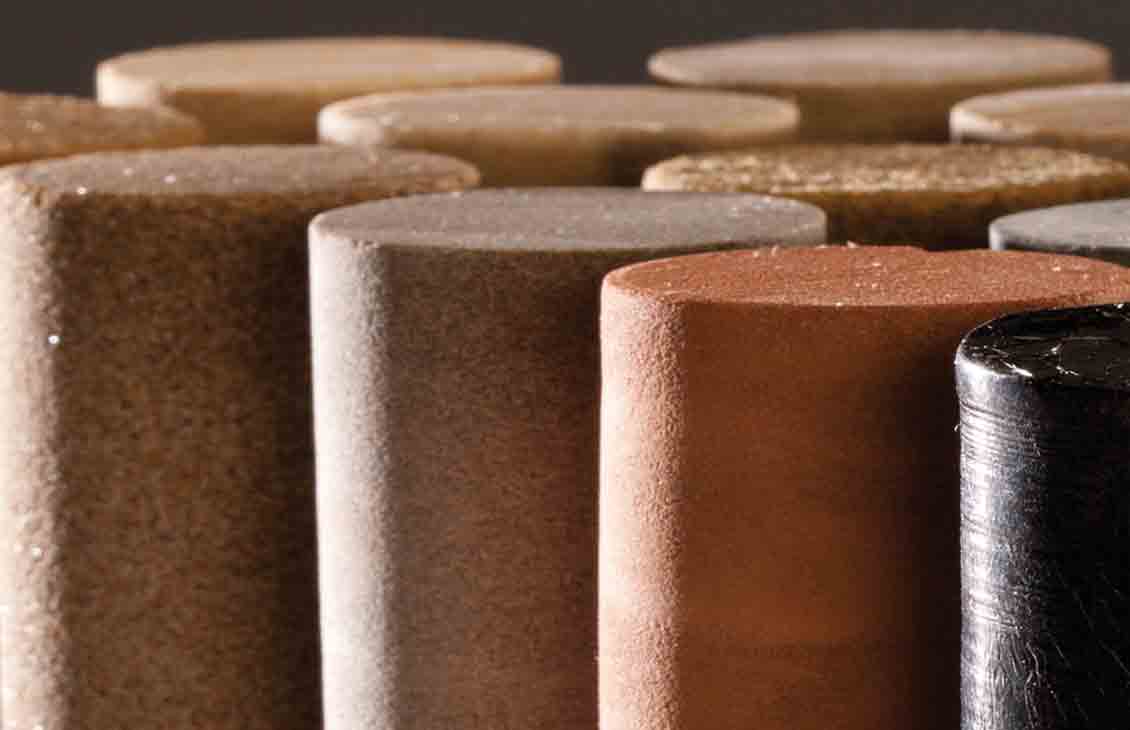UNE 22952 Determination of Core Wettability and Fluid Saturation
The determination of core wettability and fluid saturation is a critical aspect of reservoir characterization in the oil & gas sector. The UNE 22952 standard provides a robust method for assessing these properties, which are essential for understanding fluid flow behavior within porous rock formations.
The process involves the evaluation of how oil, water, and other fluids interact with the surface of core samples. This interaction influences their ability to retain and move through the reservoir rocks, affecting production rates and recovery efficiencies. Core wettability refers to the affinity or repulsion between a fluid and a solid surface within the rock matrix. Fluid saturation measures the proportion of pore space occupied by different fluids.
The UNE 22952 method employs contact angle measurements as a proxy for quantifying core wettability. By determining the contact angles between different fluids (typically water, oil, and gas) on the surface of core samples, this technique provides insights into the relative ease with which fluids can penetrate and move through the rock matrix.
The procedure involves several steps: acquiring representative core samples, preparing them according to standard protocols, exposing them to various fluids, measuring contact angles using advanced optical instruments, and analyzing the data. This method is particularly valuable for optimizing reservoir management strategies, enhancing oil recovery techniques, and ensuring compliance with international standards.
Understanding wettability and fluid saturation is crucial because it influences not only production but also environmental considerations. For instance, adjusting injection strategies based on core wettability can lead to more efficient waterflooding processes, thereby reducing the need for additional energy-intensive extraction methods. Additionally, accurate determination of these properties helps in designing better well completions and fracture treatments.
The UNE 22952 standard is widely accepted and recognized globally, making it a cornerstone in reservoir engineering practices. Its acceptance ensures that methodologies are consistent across different regions, promoting interoperability among various stakeholders involved in oil & gas operations.
For quality managers, compliance officers, R&D engineers, and procurement personnel, the ability to accurately determine core wettability and fluid saturation is indispensable. It enables them to make informed decisions regarding field development plans, optimize production processes, and ensure regulatory adherence.
Why It Matters
The accurate determination of core wettability and fluid saturation through the UNE 22952 method has significant implications for the oil & gas industry. Understanding these properties is essential for optimizing reservoir management, enhancing production efficiency, and ensuring environmental sustainability.
Firstly, by knowing how fluids interact with rock surfaces, operators can better predict and manage water injection processes during enhanced oil recovery (EOR). This knowledge helps in minimizing unnecessary water usage and reducing the risk of water breakthrough, which could lead to reduced reservoir pressure and potential damage to surrounding formations.
Secondly, accurate wettability assessments enable more effective design of production wells. The orientation and placement of these wells can be optimized based on core properties, ensuring that they are positioned in areas where fluid flow is most favorable. This strategic approach not only increases oil recovery rates but also prolongs the life of the reservoir by preventing premature decline.
Moreover, understanding core wettability aids in the selection and application of appropriate surface treatments and coatings for well casings and tools. These treatments can enhance the performance of these components under harsh downhole conditions, thereby reducing maintenance costs and extending operational lifetimes.
The assessment also plays a crucial role in environmental management by minimizing the impact of oil & gas operations on surrounding ecosystems. By optimizing fluid flow within reservoirs, operators can reduce the amount of water produced as a byproduct, lowering overall carbon footprints associated with extraction processes.
Benefits
The benefits of determining core wettability and fluid saturation through UNE 22952 extend beyond technical improvements; they also encompass economic and environmental advantages. Here are some key benefits:
- Increased Oil Recovery: By optimizing the placement and orientation of production wells, operators can significantly enhance oil recovery rates.
- Economic Efficiency: Reducing water injection needs and minimizing operational costs contribute to better financial performance for companies involved in oil & gas extraction.
- Environmental Sustainability: Minimizing water usage and reducing the carbon footprint associated with production processes aligns with global sustainability goals.
- Improved Well Performance: Strategic surface treatments can improve the durability and effectiveness of well casings, enhancing overall performance.
- Better Decision-Making: Accurate data facilitates more informed decisions at every stage of reservoir management, from initial exploration to final decommissioning.
- Regulatory Compliance: Adherence to international standards ensures that operations meet all necessary regulatory requirements.
- Enhanced Production Rates: Understanding fluid flow behavior allows for the design of more effective production strategies, leading to higher output levels.
In summary, the determination of core wettability and fluid saturation through UNE 22952 not only enhances operational efficiency but also contributes positively to environmental stewardship. These benefits are crucial in achieving sustainable development goals within the oil & gas industry.
International Acceptance and Recognition
The UNE 22952 standard has gained widespread acceptance and recognition across the globe, making it an integral part of reservoir characterization practices. Its international standing is underscored by its alignment with other relevant standards such as ISO and ASTM.
The method's robustness and reliability have been validated through numerous applications in various regions around the world. This global applicability ensures that the results obtained are consistent and comparable, facilitating interoperability among different stakeholders involved in oil & gas operations.
Oil companies, research institutions, and regulatory bodies across countries rely on UNE 22952 for their core analysis needs. Its acceptance by these entities highlights its significance in the field of reservoir engineering. By adhering to this standard, operators can ensure that their practices are up-to-date with international best practices.
The standard's recognition also extends to its role in supporting environmental policies. The ability to accurately determine core wettability and fluid saturation contributes to more sustainable oil & gas operations, aligning with broader sustainability goals. This alignment is crucial as the industry continues to evolve towards greener practices.





